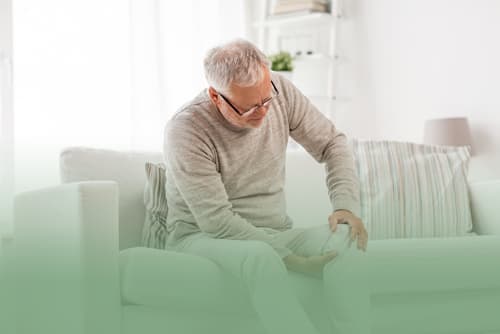Those with chronic knee or hip pain know pain relief is hard to come by—and it often comes at a price. Surgery and opioids are two proposed solutions, but many patients consider neither appealing. There is, however, another option our Orthopedic Center of Excellence now offers called COOLIEF Radiofrequency Ablation or RFA. This procedure minimizes or eliminates knee and hip pain for up to 18 months at a time.
What is Radiofrequency Ablations?
The RFA procedure targets sensory nerves of the knee and hip. These small nerves extend from the knee and hip joints and send pain signals to the spine and brain. “With RFA, we use a probe to create heat around the sensory nerves to disrupt pain signals,” explains Corey Johnson, a Certified Registered Nurse Anesthetist with Pullman Anesthesia Associates. “Not only does this relieve pain symptoms, but it reduces the need for opioid medications and other, more intensive procedures.”
What Happens During a COOLIEF the Procedure?
RFA is a simple and quick procedure, though patients are required to undergo sedation. “I like to say patients are comfortably napping,” says Johnson. “It’s no different than what you’d experience with a colonoscopy or other minor procedure.”
During the procedure, physicians use fluoroscopy or x-rays to identify the anatomical landmarks of those sensory nerves. Local anesthesia is used and 17-guage cannulas are introduced at those sites under x-ray guidance. Once the cannulas are in place, the radiofrequency probe is pushed through them. Electrical stimulation tests motor nerve involvement to make sure movement in the leg isn’t affected by the procedure. Once the nerves test negative, the ablation process begins. “The ablation process takes about two and a half minutes at each site,” states Johnson. “The radiofrequencies create a temperature of 80 centigrade, which is hot enough to disrupt the nerve so it can no longer transmit pain signals.” Once all sites have been ablated, the cannulas are removed, local anesthetic is injected, and the patient is bandaged up and sent home.
How Long Does the Pain Relief Last from COOLIEF?
Most patients who undergo the RFA procedure wake up and leave the hospital with no pain. However, it can take up to three weeks to experience peak pain reduction. Individuals typically get a 50 to 67 percent reduction in pain symptoms, which lasts anywhere from six to eighteen months. “Because no device is implanted, the nerves will regenerate and pain symptoms will return,” explains Johnson. “This isn’t a permanent pain relief solution. It simply allows people to reduce their pain medicines and become more active for a period of time.”
Patients can receive this treatment as many times as they’d like and can use it as a part of their ongoing pain management therapy.
Am I a Candidate for COOLIEF Radiofrequency Ablation?
The COOLIEF RFA procedure can potentially benefit anyone experiencing hip or knee pain but is primarily used for two groups of people. The first, younger patients with advanced arthritis. Artificial knees and hips have a life expectancy, so surgeons are often hesitant to perform a replacement surgery if the patient is young. The RFA procedure reduces or eliminates the need for opioids and expands the types of activities these patients are able to perform as they wait for surgery.
The procedure is also helpful for those preparing for a total knee or hip replacement. The “pain break” allows patients to perform physical therapy prior to the surgery in order to strengthen the muscles around the knee or hip. This means they’ll be able to participate in more aggressive physical therapy after the surgery, reducing the length of recovery.
To go through the RFA procedure, patients need a referral from an orthopedic surgeon. This is to make sure patients are aware of all available options for pain relief and improved joint functionality.
